How To Tell If Your Contacts Are Not The Right Size
Six Methods for Determining if Your Contact Lenses Are Inside Out
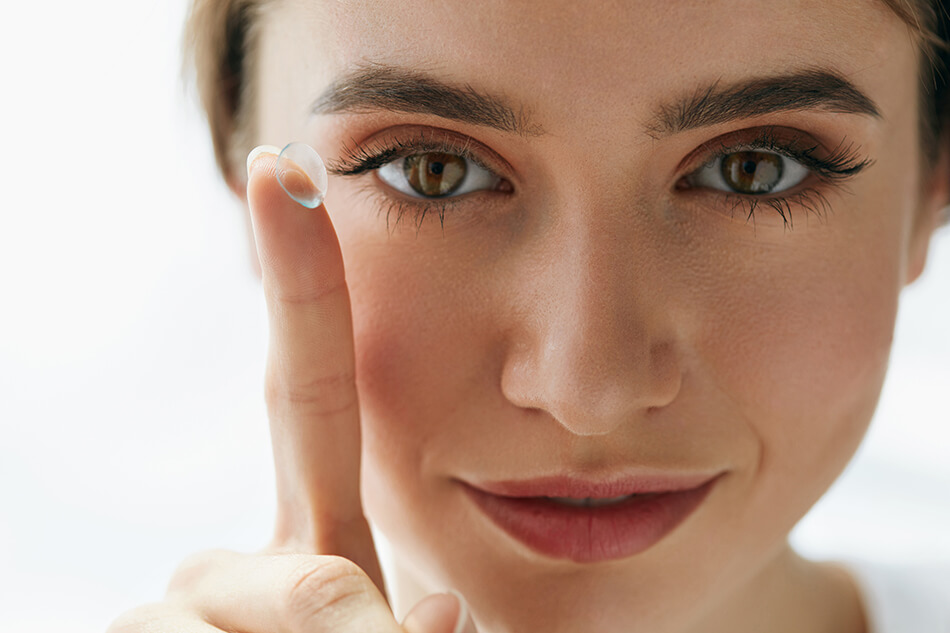
Learning to put contact lenses into your eyes is not difficult. However, figuring out if your contact lenses are inside out can be a fleck trickier. That's because contact lenses are thin and flexible, and can easily plough inside out. Sometimes, fifty-fifty those who've been wearing contacts for years accept difficulty knowing if the lenses are correct.
Of class, putting your contacts on within out causes discomfort, but doing that volition non harm your optics. That's considering contacts fit your eye'due south surface. When inside out, they do not fit equally well, even so, they typically permit you to meet just likewise.
Some people do non notice their contacts are inside out until they've worn them for a while. Others notice correct abroad. Some of the signs that you've put them in the wrong way include:
- Feeling like your contacts are moving around your eye
- Discomfort
- Gritty feeling
- Watery eyes
- Pops out more hands
So, if you lot do go your contacts in wrong, simply remove them and try once more. However, before y'all practice, try one of these methods to be sure y'all put them in correct the next time.
1. Side View
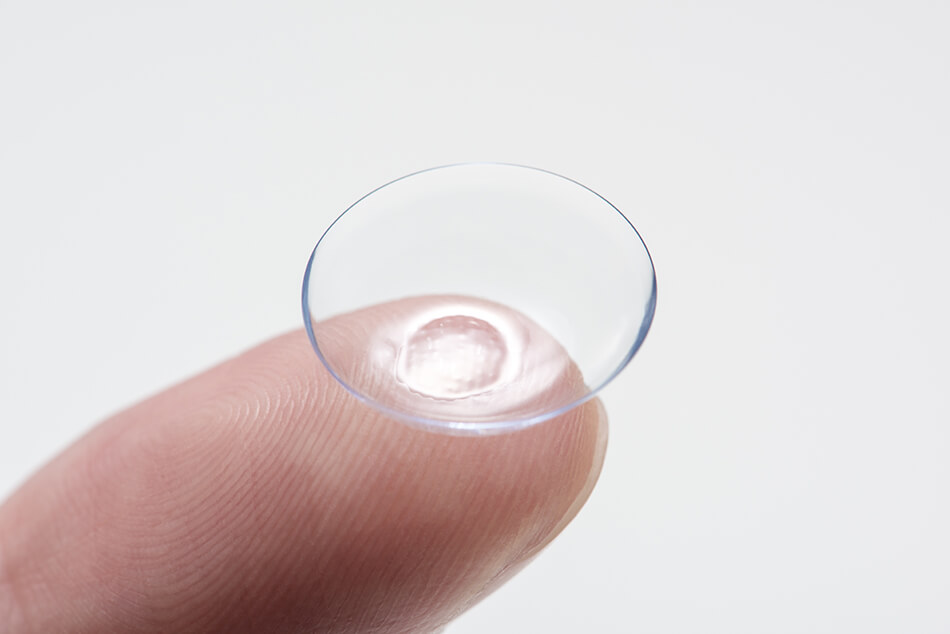
The simplest method to make up one's mind if your contacts are the correct way is to look at them from the side. To do this, follow these elementary steps:
- Place the contact lens on your fingertip. The edge should exist facing up.
- Hold your finger shut to your centre.
- Look at the shape of the contact. When it is right, your contact lens will have the shape of a cup. The edges will curve upright. If your contact lens is within out, it will have the shape of a rimmed bowl.
This method gets easier with experience. As yous come to know what a correctly positioned contact looks like, you can easily spot one that is inside out.
2. Taco Test
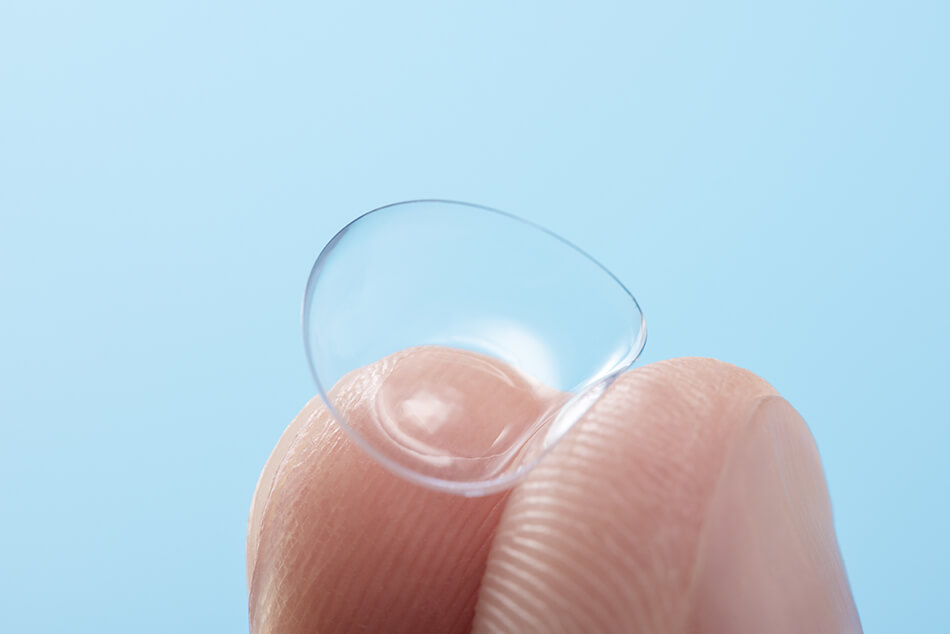
This is an older method many people used when soft contacts came to the full general public. Nevertheless, information technology is still popular today. That's considering information technology is easy to practice. Here'due south how.
- Agree the contact with the tips of your thumb and forefinger.
- Pinch the contact lens in one-half to form a taco shape.
- Expect at the edge of the contact. If the edge looks similar a taco shell, then your contact is facing the correct fashion. On the other hand, if the shape resembles a soup spoon, it is within out.
three. The 1-two-iii Approach

Determining if your contacts are inside out is challenging. That's why some manufacturers have worked to solve the issue. They did so by putting the numbers one through iii somewhere on the lens.
If you take contacts with these markings, here is how to determine if your contact is inside out:
- Put the contact lens on your fingertip.
- Hold your finger close to a bright low-cal.
- Await for the 1-two-3 marks. Each manufacturer puts the numbers in a different place. The first time you use this method, yous volition have to search the lens thoroughly.
- In one case y'all find the numbers, see if they are in gild. If they show 1-2-3, so your contact is right. If the numbers are backward, then your contact is inside out.
4. Tinted Edges
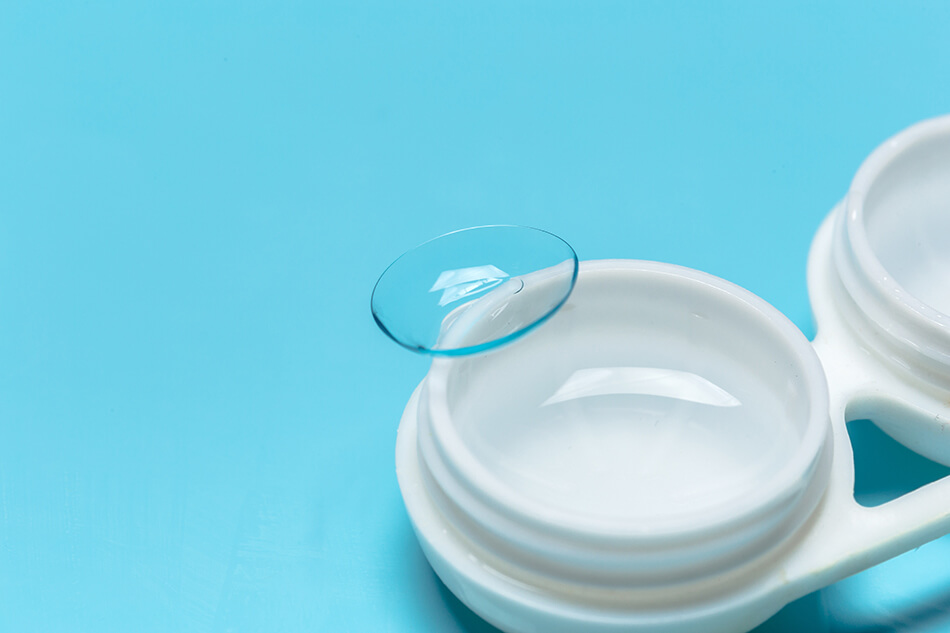
Some contact lens manufacturers solved the trouble differently. Rather than employ numbers, they tinted the inside edges of the contacts. This tinting helps people wearing contacts put them in more easily.
For those contact lenses with a greenish or blue tinted edge, do the following to determine if they are within out:
- Identify your contact lens on your fingertip.
- Place your finger below your optics and so that you look down at the contact.
- Look for the tinted edge. If the edge looks tinted, and then your contact is the correct way. If you practice not see a tinted edge, then your contact is within out.
The best manner to determine if your contacts have markings or tinted edges is to bank check the manufacturer's website.
5. Easy Flip Test

This method works better with some contact lenses than with others. However, the thought behind the method is that contact lenses practise non flip over easily when facing the right way. In contrast, information technology volition flip quite easily when inside out.
- Hold your contact lens in your palm.
- With your other hand, try to flip your contact 'inside out'.
- If you can invert your contact hands, then the contact was inside out already. On the other manus, if it is difficult to invert, your contact lens has the right orientation.
This method takes some practise. Attempt flipping your contacts until you lot meet how they respond. As well, be sure to wash your contacts thoroughly after using this method because your fingers volition touch the surface of the contacts.
six. Orientation of Daily Contact Lenses in Packaging
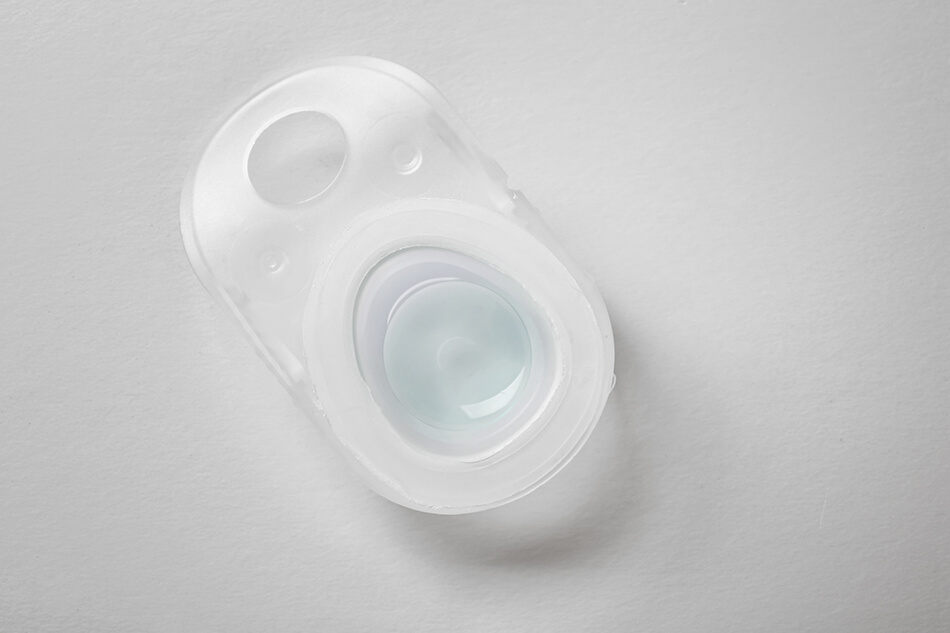
This method works best when using daily contact lenses. It will work whenever you place contacts in for the first fourth dimension, direct out of the bundle. The directions are very simple:
- Look at the orientation of the contact in the parcel.
- Keep the orientation the same way as y'all identify the contact lens in your eye.
The reason this works is that manufacturers place the contacts in the packaging the right way. You are unlikely to find an inside-out contact lens sealed in a blister pack, therefore, keeping the aforementioned contact orientation when you lot open the packet, ensures getting it in the right manner.
Over fourth dimension, you will get more experienced with your contact lenses. You'll know how they feel and may non need to utilise these methods to determine orientation. In fact, many people get and then good at putting in their contacts that they don't even need a mirror. Be patient equally you learn. Be sure y'all have plenty time to put your contact lenses in without rushing. And finally, when unsure, use these methods to make up one's mind if your contact lenses are inside out.
How To Tell If Your Contacts Are Not The Right Size,
Source: https://www.lenspure.com/articles/6-methods-contact-lenses-inside-out
Posted by: mashburnbremand.blogspot.com


0 Response to "How To Tell If Your Contacts Are Not The Right Size"
Post a Comment